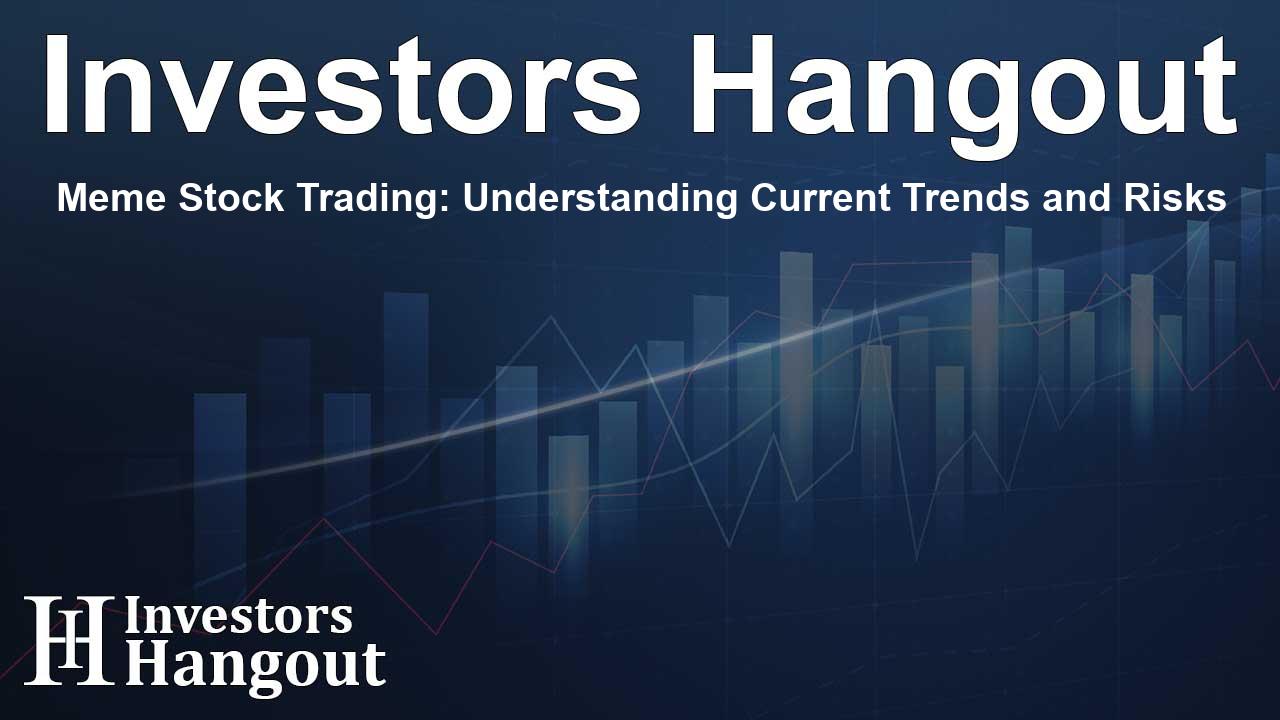Meme Stock Trading: Understanding Current Trends and Risks

Meme Stock Trading: A Resurgence of FOMO
Meme stock trading has seen a remarkable comeback. The thrill of missing out (FOMO) fuels investor behavior, making this phenomenon a fascinating aspect of today's market. Currently, the landscape of meme stocks is influenced heavily by speculative trading among retail investors, who are actively engaged through social media and online communities.
In contrast to the past hype surrounding GameStop (NYSE:GME) and AMC, the focus has shifted to stocks like Krispy Kreme (NASDAQ:DNUT), GoPro (NASDAQ:GPRO), Kohl’s (NYSE:KSS), Opendoor (NASDAQ:OPEN), and American Eagle (NYSE:AEO). Retail investors categorize these stocks under the term “DORK,”, highlighting their preference for high-risk trades based on collective sentiment rather than solid earnings.
The recent uptick in market activity is evident through the surge in call-to-put ratio, indicating a rush into bullish options positions. One specific trend is the increased interest in zero-days-to-expiration (0DTE) contracts that offer high-risk opportunities with potentially high rewards. However, as noted by analysts, this speculative trading environment raises flags, indicating that such enthusiasm for rapid profits leads to fragility in the market.
“This isn’t a healthy sign of a broad-based bull market. It reflects a market driven by liquidity and momentum. History shows the risks of treating stocks like a gamble.”
Despite warnings of potential corrections due to excessive speculation, retail investors remain undeterred, often dismissing such alerts as they continue to embrace the notion of “buying every dip.”
Even though a focus on fundamental analysis may seem less relevant in the current climate, it's worth recalling that renowned investor Benjamin Graham cautioned against this very type of speculative behavior over 75 years ago. His wisdom speaks to the core principle of maintaining a rational viewpoint regarding the intrinsic value of investments.
“Price fluctuations provide investors opportunities to buy wisely when valuations drop and sell wisely when they climb. At other times, it’s beneficial to bypass noise from the market.”
As excitement persists, Mr. Market continues to incentivize risk-taking among investors. However, the previous experiences from 2021 during the GameStop episode remind us how quickly enthusiasm can transform into despair.
Market Trends and Structural Concerns
While meme stocks garner significant attention, a deeper concern lies within the concentration of market gains among a small number of mega-cap stocks due to the inflow of passive index investments.
Passive investment funds follow market indices that are weighted by company size. As stock prices escalate, these funds are required to increase their holdings, resulting in higher market valuations, regardless of real-world fundamentals. Currently, the top 10 stocks within the S&P 500 represent over 38% of its value, a level reminiscent of the dot-com bubble peak.
This concentration raises concerns, as it can buffer underlying weaknesses in the broader market. For instance, equal-weighted indices, which treat all stocks equally, presently exhibit underperformance, suggesting that broader market health is deteriorating outside of leading names.
This passive concentration has an added effect of spurring speculative trading. As retail investors witness rising markets, they are motivated by visions of quick wealth, prompting further investments into passive index ETFs and consequently inflating lead stock prices. This cycle creates a disconnect between market values and economic conditions.
Though volatility has significantly decreased, creating an appearance of market stability, historical parallels warn us of potential repercussions if passive fund flows reverse. The outcome could result in sharp declines, impacting the wider market due to the substantial presence of mega-cap stocks.
The Wisdom of Historical Trading Strategies
Navigating a market driven by meme stocks requires insight from historical figures like Jesse Livermore, whose principles from the early 20th century continue to resonate today. Livermore understood that short-term market rationality is elusive, as prices often deviate from fundamental values.
His strategy emphasized the importance of monitoring market leaders and recognizing shifts in internal strength instead of attempting to predict precise market tops or bottoms. By observing how top-performing stocks relate to broader market performance, he advised traders to act on early signs of weakening leadership. This could mean reducing exposure during market distribution phases while remaining vigilant for overall market health indicators.
To successfully maneuver a volatile trading environment, consider implementing the following strategies:
- Monitor Leadership Daily: Stay updated on the strongest stocks relative to others. Weakness among leaders can serve as an early warning for market declines.
- Watch Breadth Indicators: Use metrics like advance/decline lines to measure the overall market health. A decline in breadth while the index rises is a potential market signal.
- Scale Exposure Gradually: Adjust your portfolio incrementally to adapt to changing market signals rather than making abrupt shifts.
- Set Predefined Exit Rules: Establish clear exit strategies independent of external news reports. The market often moves ahead of the narrative.
- Limit Meme Stock Trading: Invest conservatively in high-risk assets and view them as temporary opportunities rather than long-term commitments.
- Avoid Excessive Leverage: Minimize the use of leverage to protect your investments during periods of higher volatility.
- Maintain Liquidity: Keeping cash on hand enables you to capitalize on attractive opportunities during market fluctuations.
- Track Passive Flow Data: Monitoring ETF flows can reveal shifts that signal market changes potentially affecting your investment strategy.
- Diversify Investments: Avoid heavy reliance on mega-cap stocks, expanding investments to include mid-cap or high-value sectors.
- Stay Process-Oriented: Adhere to your risk management strategy regardless of social media narratives to prevent emotional decision-making.
Ultimately, Livermore's enduring advice reminds us that successful trading revolves around disciplined, adaptive strategies rather than blind speculation. In a market increasingly influenced by meme stock phenomena and speculative trends, attention to historical insights offers a pathway for navigating today's investment landscape effectively.
Frequently Asked Questions
What are meme stocks?
Meme stocks are shares of companies that gain popularity and volatility through social media and online communities, often driven by investor sentiment rather than fundamentals.
How does passive investing affect the market?
Passive investing can concentrate gains among a few high-performing stocks, creating potential vulnerabilities and disconnects from broader economic realities.
What lessons can be learned from Jesse Livermore's trading strategies?
Jesse Livermore's strategies emphasize the importance of monitoring market leaders, adapting to changes, and maintaining discipline in trading decisions.
Why should I limit my investments in meme stocks?
Meme stocks are often highly volatile and speculative; investing a small portion of your portfolio allows you to mitigate risks while still participating in potential gains.
What indicators should I track in a volatile market?
Important indicators include leadership performance, breadth metrics, market volatility, and ETF flow data to gauge market health and investor sentiment.
About The Author
Contact Logan Wright privately here. Or send an email with ATTN: Logan Wright as the subject to contact@investorshangout.com.
About Investors Hangout
Investors Hangout is a leading online stock forum for financial discussion and learning, offering a wide range of free tools and resources. It draws in traders of all levels, who exchange market knowledge, investigate trading tactics, and keep an eye on industry developments in real time. Featuring financial articles, stock message boards, quotes, charts, company profiles, and live news updates. Through cooperative learning and a wealth of informational resources, it helps users from novices creating their first portfolios to experts honing their techniques. Join Investors Hangout today: https://investorshangout.com/
The content of this article is based on factual, publicly available information and does not represent legal, financial, or investment advice. Investors Hangout does not offer financial advice, and the author is not a licensed financial advisor. Consult a qualified advisor before making any financial or investment decisions based on this article. This article should not be considered advice to purchase, sell, or hold any securities or other investments. If any of the material provided here is inaccurate, please contact us for corrections.
